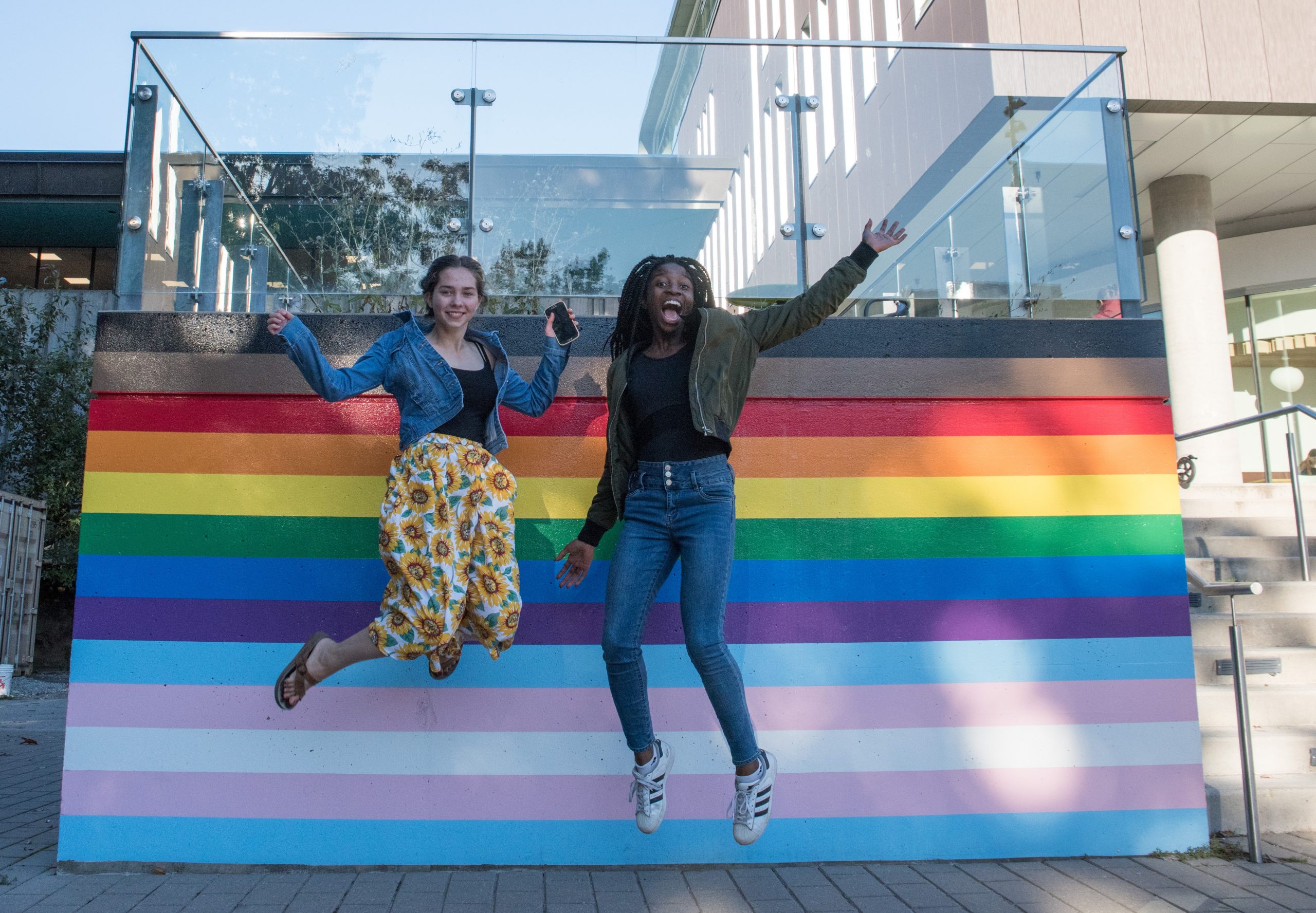
Resources for building diverse examples into biology courses:
- Project Biodiversify: https://projectbiodiversify.org/sex/
- List and bios of hundreds of scientists who identify as queer (mostly from the U.S.): https://500queerscientists.com/
- Spotlight on diverse scientists assignment in BIOL 336: https://blogs.ubc.ca/bionews/2022/03/02/teaching-spotlight-getting-to-know-diverse-scientists-in-biol-336/
- Roughgarden, J. (2004). Evolution’s rainbow: Diversity, gender, and sexuality in nature and people. Berkeley: University of California Press: https://teoriaevolutiva.files.wordpress.com/2013/10/joan_roughgarden_evolutions_rainbow_diversitybookos-org1.pdf
- Bachtrog, D., Mank, J. E., Peichel, C. L., Kirkpatrick, M., Otto, S. P., Ashman, T. L., Hahn, M. W., Kitano, J., Mayrose, I., Ming, R., Perrin, N., Ross, L., Valenzuela, N., Vamosi, J. C., & Tree of Sex Consortium (2014). Sex determination: why so many ways of doing it?. PLoS biology, 12(7), e1001899: https://journals.plos.org/plosbiology/article/file?id=10.1371/journal.pbio.1001899&type=printable
- Griffiths, Paul E. (2021) What are biological sexes? [Preprint]: http://philsci-archive.pitt.edu/id/eprint/19906
Resources for addressing sex and gender in biology courses:
- Sample Sex and Gender Acknowledgement (modifiable): https://wiki.ubc.ca/File:Sex_and_Gender_Acknowledgement.pdf
- Spotlight on adding a sex and gender acknowledgement in BIOL 371: https://blogs.ubc.ca/bionews/2022/08/18/teaching-spotlight-adding-a-sex-gender-acknowledgement-in-biol-371/
- Mercer-Mapstone, L., Bajan, S., Banas, K., Morphett, A., and McGrath, K. (2021). Breaking the Binary: Teaching Inclusive Conceptions of Sex and Gender in Undergraduate Science. Teaching & Learning Inquiry, 9(2): http://dx.doi.org/10.20343/teachlearninqu.9.2.6 (Note: Pam Kalas received access to all the teaching materials mentioned in the article; authors have some conditions for use – please get in touch if interested in seeing/using them)
- Gender unicorn: https://transstudent.org/gender/
- Stuhlsatz, M.A.M., Buck Bracey, Z.E. & Donovan, B.M. (2020). Investigating Conflation of Sex and Gender Language in Student Writing About Genetics. Sci & Educ, 29, 1567–1594: https://doi.org/10.1007/s11191-020-00177-9
Resources for making biology courses more welcoming and inclusive for sex and gender diverse students:
- How to Support Gender and Sexually Diverse Students in UBC Biology courses (student-generated recommendations): https://blogs.ubc.ca/bionews/2021/12/01/how-to-support-2slgbtqia-students-in-the-biology-classroom/
- Examples of inclusive language in biology: https://www.genderinclusivebiology.com/bettersciencelanguage
- Cooper, K. M., et al. (2020). Fourteen Recommendations to Create a More Inclusive Environment for LGBTQ+ Individuals in Academic Biology. CBE–Life Sciences Education, 19(3), es6: https://doi.org/10.1187/cbe.20-04-0062
- Hales K. G. (2020). Signaling Inclusivity in Undergraduate Biology Courses through Deliberate Framing of Genetics Topics Relevant to Gender Identity, Disability, and Race. CBE–Life Sciences Education, 19(2), es2: https://doi.org/10.1187/cbe.19-08-0156
- Zemenick, A.T., Turney, S., Webster, A.J., Jones, S.C., Weber, M.G. (2022). Six Principles for Embracing Gender and Sexual Diversity in Postsecondary Biology Classrooms, BioScience, 72(5), 481–492: https://doi.org/10.1093/biosci/biac013
Non biology-specific resources for making the classroom more welcoming and inclusive for sex and gender diverse students:
- Pronouns at UBC: https://equity.ubc.ca/resources/gender-diversity/pronouns/
- Names at UBC: https://equity.ubc.ca/resources/gender-diversity/names/
- UBC Positive Space terminology (extensive): https://equity.ubc.ca/resources/positive-space/positive-space-language/
- Trans-inclusive classrooms: https://ctlt-inclusiveteaching.sites.olt.ubc.ca/files/2020/01/transinclusive-classrooms_v2.pdf
- UBC “Positive Space: Foundations” course: https://wpl.ubc.ca/browse/equity-and-inclusion/courses/wpl-eio-psfn
Some practical tips:
Apologizing after misgendering someone/using the wrong pronouns:
- Correct yourself, apologize, move on.
- Don’t make it about yourself, center the harm/person who was harmed.
- Don’t put the person who was harmed in a position where they have to comfort you, or where
they feel they are inconveniencing you. - Don’t comment on “how hard it is to get it right” or anything of the sort.
- Avoid repeating the mistake.
Respectfully asking for someone’s pronouns:
- Introduce yourself and share your pronouns first.
- Most likely, the other person will also share their pronouns.
- If this is not the case, you can ask “What pronouns should I use to refer to you?”
- Make it clear you just want to be respectful.
- Don’t assume pronouns/gender based on how someone looks.
- Don’t only ask people whose gender you’re confused about for their pronouns, ask everyone. This way, we avoid:
- Accidentally misgendering someone;
- Singling out people whose gender expression is non-conforming.
Resource list curated by Nafeesa Alibhai, Kenzie Arnott, Pam Kalas, and Lucía A. Quesada-Ramirez,